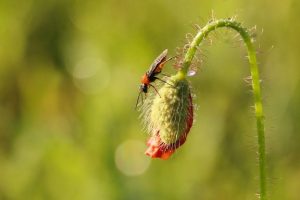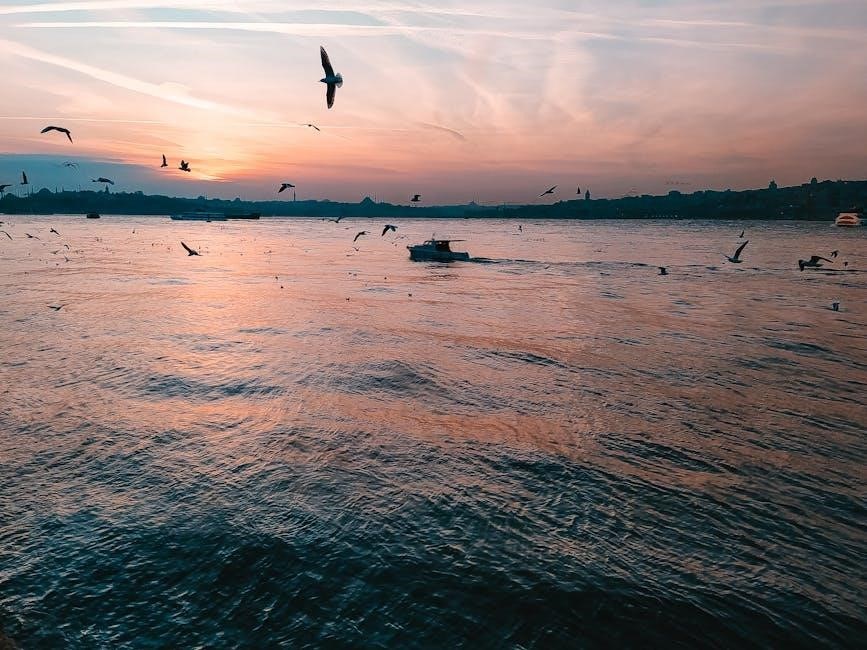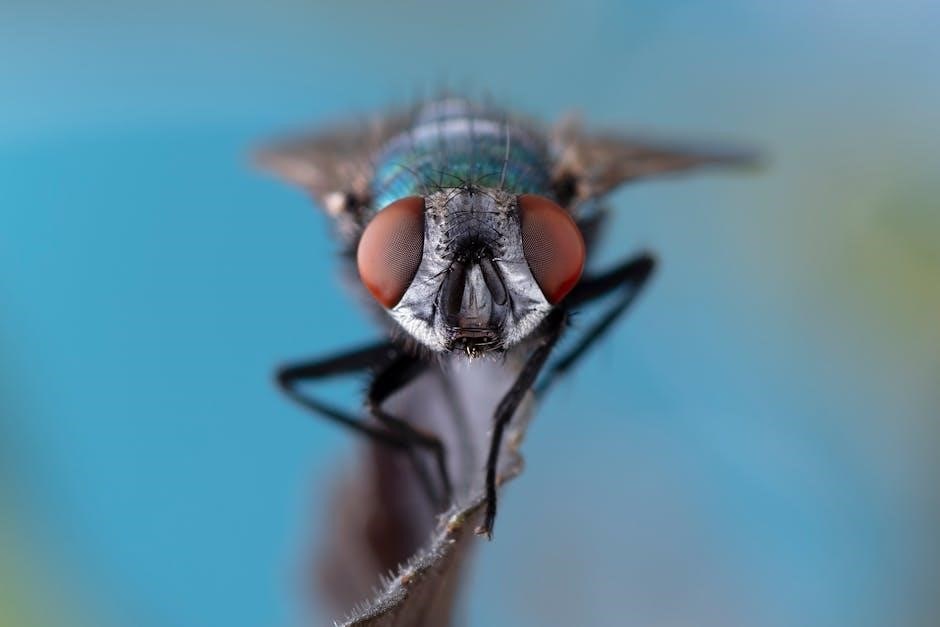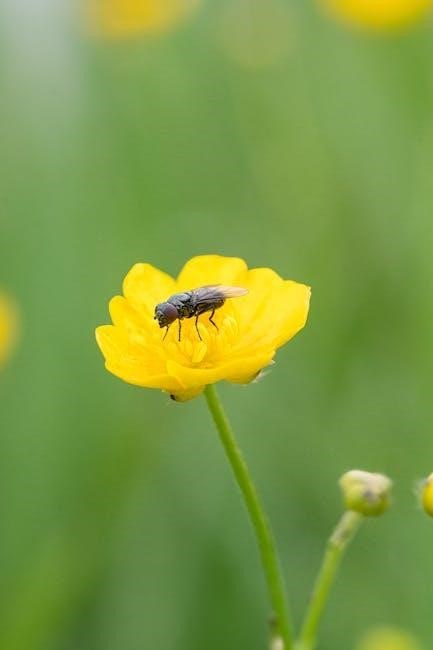fly fishing fly size guide

Fly size is crucial in fly fishing, as it directly impacts the likelihood of catching fish. Hook sizes are counterintuitive, with larger numbers indicating smaller hooks. Matching fly size to natural insects ensures a more effective presentation. Understanding this relationship is key to success on the water.
Understanding the Importance of Fly Size in Fly Fishing
Fly size plays a critical role in fly fishing success, as it directly impacts a fish’s willingness to bite. The size of the fly must closely mimic the natural insects or baitfish that fish are feeding on. A fly that is too large or too small can be easily dismissed by wary fish, especially in clear water conditions. The relationship between hook size and fly size is essential, as larger hooks typically accommodate bigger flies, while smaller hooks are better suited for delicate patterns. Accurate size matching enhances the realism of the presentation, increasing the chances of a strike. Observing the size and behavior of natural insects in the water is a key strategy for selecting the right fly size. This attention to detail ensures that the fly appears as a believable food source, making it more attractive to fish.
Overview of Hook Sizes and Their Impact on Fly Fishing
Hook sizes are a critical factor in fly fishing, as they determine the overall size and proportions of a fly. Unlike other systems, fly hook sizes are counterintuitive: a larger numerical value corresponds to a smaller hook. For example, a size 20 hook is much smaller than a size 6 hook. This system affects how flies are tied and presented to fish. Smaller hooks create more delicate flies, often used for trout in clear water, while larger hooks are better suited for robust patterns like streamers. The size of the hook also influences the fly’s realism and movement in the water, which can make or break a fish’s decision to strike. Understanding hook sizes is essential for selecting the right fly to match natural insects or baitfish, ensuring a more effective and successful fishing experience. Proper hook size selection can significantly enhance the chances of attracting and landing fish.

Basics of Fly Size and Hook Sizing
Fly size is determined by the hook size it’s tied on, with larger numerical hook sizes indicating smaller hooks. This system affects fly proportions and presentation, essential for matching natural insects.
How Hook Sizes Work: A Beginner’s Guide
Hooks are sized from the smallest (24) to the largest (1/0). Smaller numbers mean larger hooks, while bigger numbers indicate smaller ones. This system can be confusing for beginners, but understanding it is essential for selecting the right fly. The size of the hook determines the fly’s overall proportions, affecting how it appears to fish. For instance, a size 6 hook is larger and often used for bigger flies, while a size 22 hook is tiny and reserved for delicate patterns. Matching the hook size to the natural insect ensures a realistic presentation, increasing the chances of a successful catch. This guide helps anglers decipher hook sizes and choose appropriate flies for various fishing scenarios. Proper hook size selection is fundamental to effective fly fishing.
Why Larger Hook Sizes Mean Smaller Flies
In fly fishing, hook sizes are counterintuitive: larger numerical values correspond to smaller hooks. For example, a size 22 hook is much finer than a size 6 hook. This system can confuse beginners, but it’s rooted in historical manufacturing standards. Smaller hooks allow for delicate fly patterns that mimic tiny insects, making them ideal for trout and other selective fish. Larger hooks, while fewer in number, are reserved for bigger flies like streamers or saltwater patterns. The size of the hook directly influences the fly’s overall proportions, ensuring a natural presentation. Understanding this relationship is vital for selecting flies that match the target species’ preferences. This guide explains how hook sizes work and why smaller hooks are often the key to successful fly fishing, especially in freshwater scenarios. Proper hook size selection enhances the fly’s realism and appeal to fish.
Standard Hook Sizes for Common Fly Fishing Flies
Hook sizes for fly fishing vary widely, but there are standard ranges for common fly types. Dry flies typically range from size 10 to 22, with smaller sizes for more delicate patterns. Nymphs and streamers often use larger hooks, such as sizes 4 to 14, depending on the target species. Saltwater flies may use even larger hooks, down to size 2 or smaller. For example, a size 14 hook is ideal for mayfly patterns, while a size 6 hook is better suited for larger streamers. Understanding these standards helps anglers match their flies to the natural insects or baitfish their target species are feeding on. Using the right hook size ensures the fly appears realistic and is more likely to attract strikes. Keeping a variety of hook sizes in your fly box allows for flexibility in different fishing scenarios and conditions.

Natural Insects and Their Relation to Fly Size
Natural insects vary in size, and matching their dimensions is key to effective fly fishing. Accurate fly size mimics the prey fish naturally encounter, increasing strike chances.
Matching the Size of Natural Insects for Effective Fly Fishing
Accurately matching the size of natural insects is essential for successful fly fishing. Fish are highly selective, often targeting specific prey based on size and movement. By observing the insects present in the water, anglers can choose flies that closely resemble them. For instance, trout may focus on mayflies of a particular size during a hatch. Using a fly that mirrors this size increases the likelihood of a strike. Additionally, the color and shape of the fly should align with the natural insect to ensure a convincing presentation. This attention to detail enhances the chances of fooling even the most discerning fish, making size matching a critical aspect of fly selection.
Common Insect Sizes and Their Corresponding Fly Sizes
Common insects like mayflies, caddisflies, and midges vary in size, influencing fly selection. Mayflies typically range from size 10 to 18, with larger patterns imitating mature nymphs or adults. Caddisflies are often smaller, ranging from 12 to 16, and are frequently mimicked in pupal or adult stages. Midges are the smallest, often requiring flies in sizes 18 to 22. Larger insects, such as stoneflies or hoppers, may use smaller hook sizes due to their bulk. Understanding these size relationships helps anglers choose flies that closely match natural prey, increasing the chances of a strike. Observing the insects present in the water and their life stages is crucial for making informed decisions. This alignment ensures the fly appears as a natural food source to the target species, enhancing the effectiveness of the presentation.
Role of Color and Abdomen in Fly Selection
The abdomen of a fly plays a significant role in its visibility and appeal to fish. As the most visible part of the insect, the abdomen’s color and texture are critical for mimicry. Natural insects often display distinct abdominal markings or hues, which anglers replicate to create lifelike flies. For example, mayflies and caddisflies frequently have contrasting abdominal colors that fish key in on. While size and shape are primary factors, color enhances the fly’s realism. However, it’s important to note that color is secondary to size and movement in most cases. The abdomen’s visibility makes it a focal point for fish, especially in clear water conditions. Understanding and incorporating these details into fly selection can significantly improve fishing success by making the fly more attractive and believable to the target species.

Presenting the Fly: Size and Technique
Fly size impacts casting ease and visibility, while proper techniques ensure natural presentation and accurate fly placement, enhancing the likelihood of attracting and hooking fish effectively in various conditions.
The Role of Presentation in Fly Fishing Success
Presentation is paramount in fly fishing, as it determines how naturally a fly behaves in the water. Even the most accurately sized fly can fail if not presented correctly. Factors such as drift, movement, and depth must mimic the natural insects or baitfish that fish are feeding on. A poorly presented fly, regardless of its size, may appear unnatural and be ignored by fish. Skilled anglers focus on achieving a drag-free drift for dry flies and precise depth control for nymphs or streamers. The ability to adapt presentation techniques to changing water conditions and fish behavior is a hallmark of successful fly fishing. Proper presentation enhances the effectiveness of fly size, making it a critical component of the overall strategy.
How Fly Size Affects Casting and Presentation
Fly size significantly influences casting and presentation. Larger flies, tied on bigger hooks, are heavier and easier to cast, especially for beginners. They create a more visible target for fish but can be less delicate. Smaller flies, while more challenging to cast accurately, offer a more natural presentation, often necessary for wary trout. The size of the fly affects line control and the ability to achieve a smooth, drag-free drift. Anglers must balance fly size with technique to ensure precise placement and movement. Proper casting technique, such as using the right line weight and leader, is essential for managing different fly sizes effectively. Ultimately, the right fly size enhances both casting efficiency and presentation quality, leading to more successful outings on the water.
Importance of Accuracy in Fly Placement
Accuracy in fly placement is critical for a successful fly fishing experience. Placing the fly in the exact spot where fish are feeding or hiding increases the chances of a strike. Even the most perfectly tied fly won’t catch fish if it’s not presented in the right location. Observing the water and identifying likely holding spots for fish is essential. Accuracy also depends on understanding the natural drift and movement of insects or bait, as fish are highly attuned to these details. Practicing casting and line control helps anglers achieve precise placement. Additionally, using the right fly size and type for the conditions ensures the fly behaves naturally in the water. Over time, developing a keen eye for where fish are likely to be and improving casting skills enhances accuracy, leading to more consistent success on the water.
Species-Specific Fly Size Considerations
Fly size varies significantly by species, with trout often requiring smaller flies (size 14-22) and saltwater species needing larger ones. Panfish and trophy trout fall in between, depending on conditions.
Trout Fly Sizes: From Panfish to Trophy Trout
Fly size plays a critical role when targeting trout, as different species and conditions require specific approaches. For panfish and smaller trout, sizes 14 to 18 are typically effective, mimicking natural insects like mayflies or midges. Average-sized trout often respond well to flies in the 10 to 14 range, which can imitate larger insects or baitfish. When pursuing trophy trout, larger flies, such as streamers or leech patterns on size 2 to 6 hooks, are often more productive, as they mimic substantial prey. Observing natural insect activity and adjusting fly size accordingly is essential for success. Additionally, presentation techniques, such as subtle movements for smaller flies or aggressive stripping for larger ones, can significantly impact results. Matching the fly size to the trout’s feeding habits ensures a higher likelihood of strikes, making it a cornerstone of effective fly fishing strategies.
Saltwater Fly Sizes: Targeting Larger Species
In saltwater fly fishing, larger species like tarpon, barracudas, and snook often require bigger flies to attract their attention. Fly sizes typically range from 2/0 to 6, with patterns designed to mimic baitfish, crustaceans, or other prey. Streamers, poppers, and crab flies are popular choices, as they imitate the movement and appearance of natural forage. When targeting larger species, accuracy in presentation is crucial, as these fish are often selective. Casting distance and retrieval speed must align with the behavior of the prey being mimicked. While smaller flies can occasionally work, larger, more visible patterns generally increase the chances of enticing trophy-sized saltwater fish. Understanding the specific prey preferences of your target species is key to selecting the right fly size and type for a successful saltwater fly fishing experience.
Specialized Fly Sizes for Nymphing and Dry Flies
Nymphing and dry fly fishing require distinct fly sizes to match the behavior and appearance of insects in different water conditions. For nymphing, smaller flies (sizes 16-20) are typically used, as they imitate aquatic insects like mayflies, caddis, and stoneflies in their larval or pupal stages. Patterns such as Pheasant Tail, Hare’s Ear, and Copper John are often tied on smaller hooks to mimic the natural drift of nymphs. In contrast, dry flies are larger (sizes 12-18) and designed to float on the water’s surface, attracting fish to rise and strike. Popular dry fly patterns like Elk Hair Caddis, Blue-Wing Olive, and Stimulator are tied on larger hooks to enhance visibility and mimic adult insects. The choice of fly size for nymphing or dry flies depends on the target species, water depth, and the natural insects present. Matching these elements ensures a more effective presentation and increases the chances of a successful catch.

Practical Tips for Choosing the Right Fly Size
Observe and measure natural insects to match their size accurately. Adjust fly size based on water conditions and fish behavior. Carry a variety of sizes to adapt quickly.
Observing Natural Flies in the Field
Observing natural flies in their habitat is essential for selecting the right fly size. Use a small net or magnifying glass to capture and measure insects accurately. Note their color, shape, and movement, as these details help in mimicking them effectively. Pay special attention to the abdomen, as it is often the most visible part to fish. Carry a notebook to record observations, including the time of day and water conditions when specific flies are active. This practice helps in anticipating what flies fish are likely feeding on. By studying natural flies, anglers can make informed decisions about fly size, color, and presentation, increasing their chances of success on the water.
Measuring and Mimicking Natural Insects
Measuring and mimicking natural insects is a cornerstone of effective fly fishing. Use a small net to capture insects and measure their length using a scale or ruler. Note their shape, color, and texture to replicate them accurately. Pay attention to the abdomen, as its color is often the most visible to fish. Use this information to tie flies that closely match the natural insects in size, color, and movement. For example, if the natural insects are size 16, choose a fly pattern that aligns with this measurement. Carry a magnifying glass or camera to study details up close. By mimicking these characteristics, your flies will appear more lifelike to fish, increasing the chances of a successful catch. This process requires patience but is rewarding for anglers seeking precision in their craft.
Adjusting Fly Size Based on Water Conditions
Water conditions play a significant role in determining the appropriate fly size. In clear water, smaller flies are often more effective, as fish can inspect them thoroughly. Conversely, in murky or fast-moving water, larger flies are preferable, as they are more visible and easier for fish to locate. During high water flows, consider using heavier, larger flies that can sink quickly and withstand strong currents. In low water conditions, opt for smaller, more subtle patterns to avoid startling fish. Seasonal changes also influence fly size; for example, during hatches, match the size of emerging insects. Additionally, time of day impacts fly choice, with larger flies often working better in low-light conditions. By adapting fly size to these variables, anglers can enhance their chances of success in diverse fishing environments. This flexibility is key to mastering fly fishing strategies.
Organizing Your Fly Collection by Size
Organizing flies by size ensures efficiency and quick access during fishing. Use compartments or separate boxes for different sizes, keeping essentials visible and easily accessible for various fishing conditions.
Importance of a Well-Organized Fly Box
A well-organized fly box is essential for efficiency and success on the water. It allows quick access to the right fly size and type, saving valuable fishing time. A disorganized box can lead to wasted moments searching for the perfect fly, potentially missing feeding windows. By categorizing flies by size, type, and color, anglers can swiftly match their selection to the conditions. This system also helps prevent damage to delicate flies and ensures essentials are always within reach. A structured fly box enhances the overall fishing experience, making it easier to adapt strategies and focus on presenting the fly effectively. Proper organization is a simple yet critical step in maximizing fishing efficiency and enjoyment.
How to Categorize Flies by Size and Type
Categorizing flies by size and type is a practical approach to fly organization. Start by separating flies into size groups, such as small (16-22), medium (10-14), and large (2-8). Within each size category, further divide flies by type, like dry flies, nymphs, or streamers. Use compartments or dividers in your fly box to keep these groups distinct. Consider color and specific patterns for additional refinement. This method ensures quick identification and retrieval of the right fly for any situation. Proper categorization also helps maintain fly condition and extends their lifespan by preventing damage. By organizing flies thoughtfully, anglers can streamline their selection process and stay focused on fishing. This systematic approach enhances efficiency and contributes to a more enjoyable and productive fishing experience.
Essential Fly Sizes Every Angler Should Carry
Every angler should carry a selection of flies in key sizes to cover a variety of fishing scenarios. For trout, sizes 14 to 18 are versatile and effective, imitating common insects like mayflies and midges. Larger flies, such as size 6 to 10, are ideal for targeting bigger species or imitating baitfish and leeches. Saltwater anglers often rely on size 2 to 6 flies to mimic crustaceans and larger prey. Including a mix of nymphs, dry flies, and streamers in these sizes ensures adaptability. Carrying essential sizes allows anglers to respond to changing conditions and match natural prey effectively, increasing the chance of a successful catch. This balanced approach provides flexibility and confidence, whether fishing in freshwater or saltwater environments.
Fly size is a critical factor in fly fishing success. By understanding hook sizes, matching natural insects, and adapting to conditions, anglers can enhance their effectiveness on the water.
Recap: Key Takeaways from the Fly Size Guide
The fly size guide emphasizes the importance of understanding hook sizes, as larger numbers denote smaller hooks. Matching fly size to natural insects is crucial for effective presentation. Trout often favor sizes 14 to 22, while saltwater species require larger hooks. Organizing flies by size and type improves accessibility. Observing and mimicking natural insects ensures a realistic offering. Accuracy in casting and presentation significantly impacts success. Adjusting fly size based on water conditions and species-specific needs enhances effectiveness. Practicing these strategies and staying adaptable are key to mastering fly fishing. A well-organized fly collection and understanding the role of color and abdomen in fly selection further contribute to successful outings. Continuous learning and adaptation are essential for long-term success in fly fishing.
Encouragement to Practice and Adapt Fly Size Strategies
Consistent practice and adaptability are essential for mastering fly size strategies. Spend time on the water, observing natural insects and adjusting your flies accordingly. Each outing offers a chance to refine your skills and learn from the environment. Embrace experimentation with different fly sizes and techniques to discover what works best in various conditions. Keep a journal to track successful patterns and sizes, helping you build a reliable arsenal. Remember, fly fishing is a journey of continuous improvement, and even seasoned anglers find new ways to enhance their strategies. Stay curious, persistent, and patient, as the rewards of a well-chosen fly size will pay off in memorable catches and a deeper connection to the sport.
Resources for Further Learning and Improvement
Exploring resources can significantly enhance your understanding of fly size and its role in fly fishing. Online forums and communities, such as fly fishing blogs and social media groups, offer valuable insights and tips from experienced anglers. Video tutorials and instructional guides provide step-by-step lessons on selecting and using the right fly sizes. Books on fly fishing techniques and entomology can deepen your knowledge of natural insects and their relation to fly size. Additionally, local fly shops and fishing guides often host workshops and seminars, offering hands-on learning opportunities. Investing time in these resources will help refine your skills and improve your success on the water. Remember, continuous learning is key to mastering the art of fly fishing.